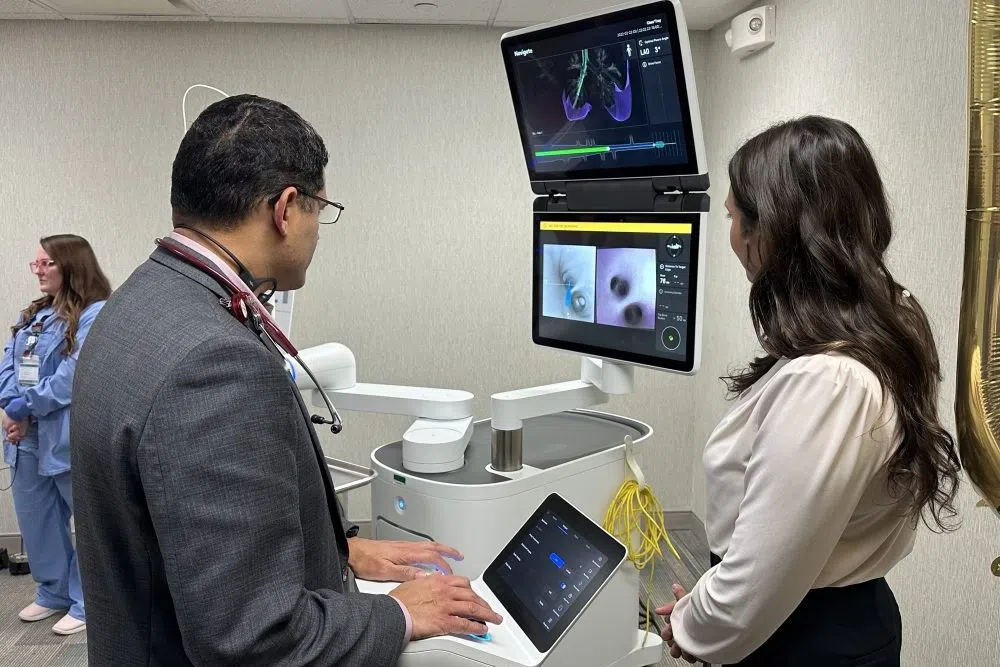PEORIA, Ill. – It’s been used by a pulmonologist at Carle Health Methodist Hospital at least 100 times since it was first installed two years ago.
It’s a first-in-the area device called ION Robotic Assisted Bronchoscopy – used in the detection of lung cancer, along with a CT scan.
Dr. Ahmed Agameya says previous forms of lung cancer screening weren’t nearly as accurate as the 95 percent this device is.
“The usual way it’s done is the bronchoscopist, or lung doctor, would hold the camera in his hand, and then would drive it down into his patient, while relying on his interpretation of the CT and where he thinks he should go,” said Agameya. “While that can get the diagnosis, the accuracy with doing it is around 70 percent, 71 percent.
The newer method, Agameya says, also uses a camera, but it’s much less invasive and provides a much clearer view.
“The main benefit of this is…we’re not really doing any incisions, we’re not cutting anything out,” said Agameya. “The only thing I’m doing is I’m taking that camera, and I’m driving it down very accurately to reach that specific area I’m interested in. Once I’m there, I have many ways to confirm this is the right spot.”
Amy Hill is the surgical services director at Methodist, and says the screening technology is giving lung cancer patients a sigh of relief at what can otherwise be a frustrating time.
“When a patient first learns they have a nodule, nobody wants to wait. A week feels like two months,” said Hill. “With this technology, and this pathway, it affords us the opportunity to get the patient their procedure, quicker to diagnosis, and quicker to treatment.”
The American Cancer Society says lung cancer is still the leading cause of cancer deaths in the nation. And, while smoking is the leading cause of lung cancer, it’s also possible to get it without having ever smoked.







Comments